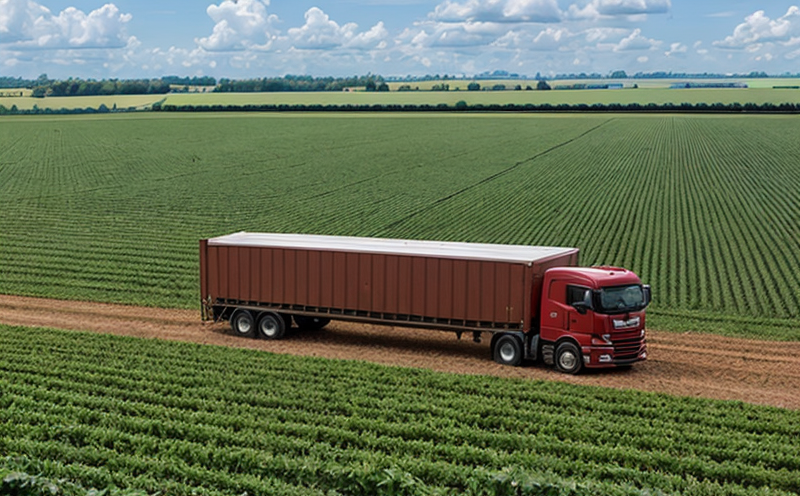Packaging & Transport Simulation for Agricultural Goods
Ensuring that agricultural goods are protected during transport and storage is critical to maintaining product quality and integrity. The packaging and transportation of agricultural products can be complex due to the diverse range of goods, their varying sensitivities to physical stress, temperature, humidity, and other environmental factors.
The challenges begin with selecting appropriate materials that can withstand various environmental conditions without compromising product safety or quality. This is where specialized testing comes into play. By simulating real-world transport scenarios in a controlled laboratory environment, we can accurately assess the performance of packaging solutions under precise conditions.
Our approach involves rigorous testing protocols aimed at evaluating how different types of packaging perform across multiple stages of transportation—from loading and unloading to transit through various environmental conditions such as temperature fluctuations and vibrations. Understanding these parameters is crucial for optimizing both cost-effectiveness and safety in agricultural logistics chains globally.
The tests we conduct are designed specifically for the unique characteristics of agricultural goods, including moisture sensitivity, biological activity, and susceptibility to physical damage during handling or shipping. Our state-of-the-art facilities allow us to replicate a wide range of environments that these products might encounter during their journey from farm to market.
For instance, we can simulate high humidity conditions found in tropical climates, low temperatures typical of northern regions, and even the rough handling scenarios experienced at ports or warehouses. These simulations help identify potential weaknesses in current packaging designs early on, allowing for improvements before products reach consumers.
In addition to physical tests, our laboratory also offers chemical analysis services to ensure that any protective coatings or treatments applied do not adversely affect either the product itself or its intended use by customers.
Why It Matters
The proper packaging and transport of agricultural goods are essential components in ensuring food security, reducing waste, and enhancing market competitiveness. Poorly designed packages can lead to spoilage or contamination, which not only harms the environment but also affects business operations negatively.
- Reduces spoilage rates during transit
- Avoids contamination issues that could arise from improper packaging practices
- Ensures compliance with international standards and regulations
- Promotes efficient use of resources by preventing unnecessary waste
By investing in thorough testing, businesses can minimize these risks while also improving their reputation among consumers who value safe, high-quality products. This is particularly important for companies operating within the agriculture and forestry sectors where maintaining product integrity throughout distribution channels plays a vital role.
Scope and Methodology
| Test Parameter | Description |
|---|---|
| Temperature Cycling | Simulates the fluctuating temperatures experienced by goods during transportation. |
| Vibration Testing | Evaluates how well packaging withstands mechanical shock and vibration forces. |
| Humidity Exposure | Determines the impact of moisture levels on package integrity and product quality. |
| Test Condition | Description |
|---|---|
| Load Simulation | Replicates the weight distribution and compression forces acting on packages. |
| Impact Testing | Evaluates how packaging responds to sudden impacts like dropping or bumping. |
The methodology employed ensures that all tests are conducted under controlled conditions, allowing for accurate comparisons between different types of packaging. This enables clients to make informed decisions about which solutions best meet their needs based on scientific evidence rather than speculation or guesswork.
International Acceptance and Recognition
- The International Organization for Standardization (ISO) has published several standards relevant to agricultural packaging including ISO 17864:2015 which deals with the determination of moisture vapor transmission rate.
- American Society for Testing Materials (ASTM) provides guidelines such as ASTM D3946-18 covering flexural properties of solid wood structural panels used in packaging.
- European Committee for Standardization (CEN) has issued EN 12057 series on load tests for corrugated boxes and similar containers.
These international standards provide a benchmark against which our testing results can be compared, ensuring consistency across borders. Compliance with these standards not only enhances credibility but also facilitates easier trade between countries by meeting pre-arranged quality expectations.





